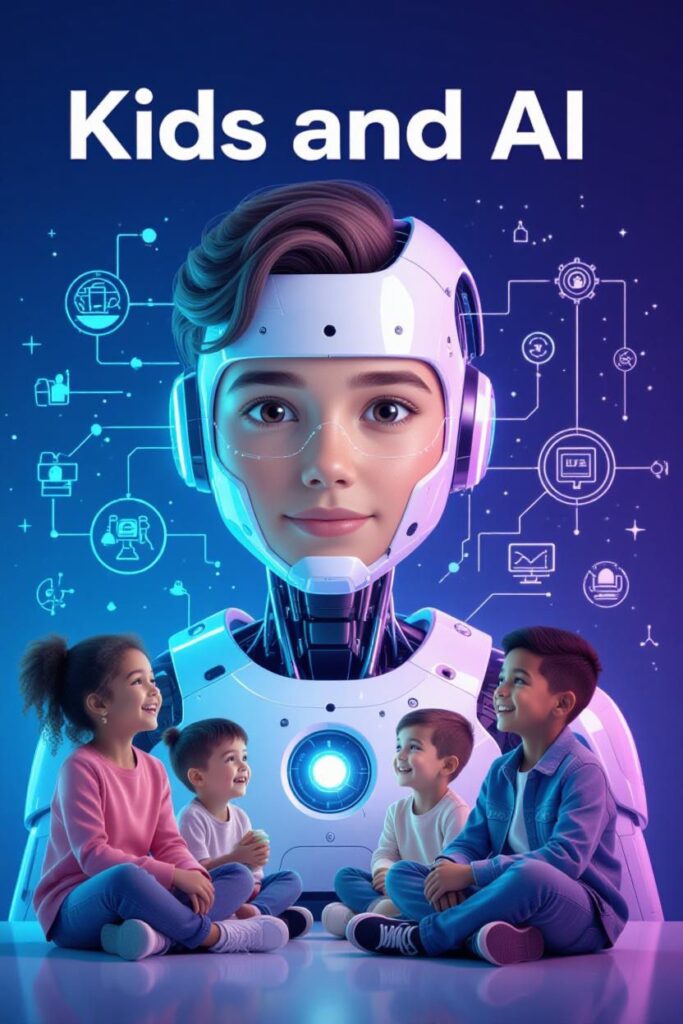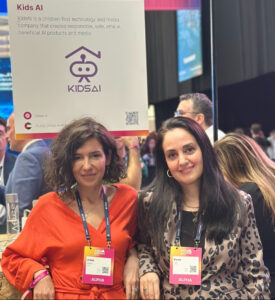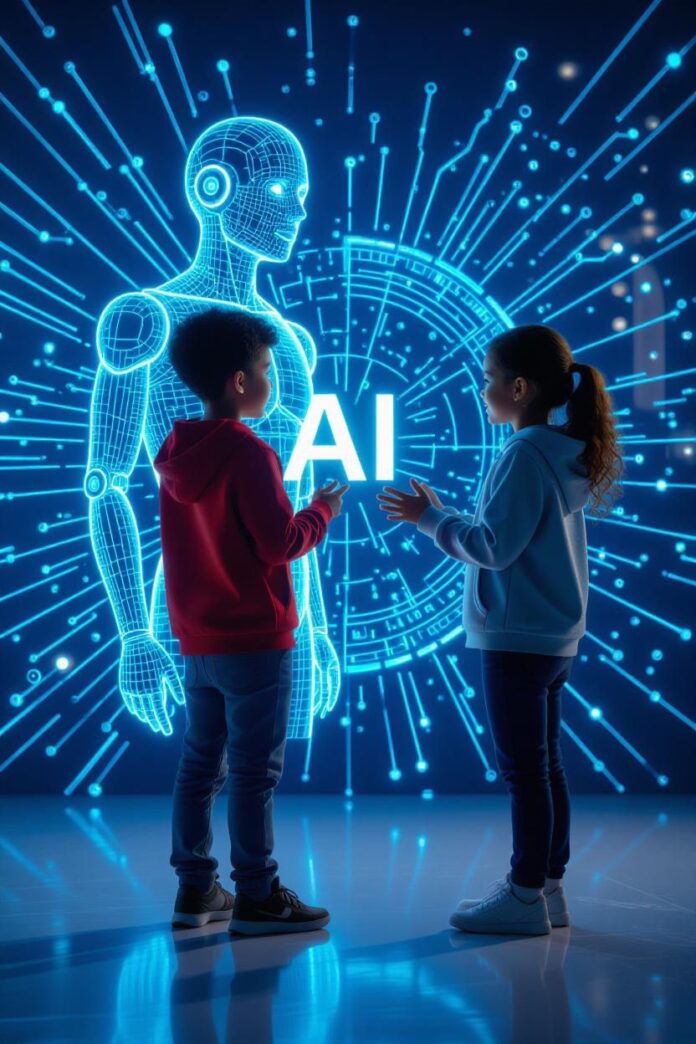As artificial intelligence becomes embedded in children’s everyday experiences, from learning apps and voice assistants to digital games and recommendation engines, the line between human and machine interaction grows blurrier. Children are not just using AI. They are interpreting it, copying it, and in many cases, trusting it.
Yet most AI systems were never designed with children in mind. And when children encounter AI that mimics emotion, flattens complexity, or offers answers without explanation, the result isn’t just a technical flaw, it’s a developmental one.
That’s the gap KidsAI was built to address.
Children experience AI differently than adults. They often anthropomorphize systems, assume emotional intent, and absorb cues from the way AI responds to them. Without transparency or explanation, these interactions can mislead rather than empower. Understanding this developmental reality is essential to designing AI that informs rather than manipulates, and supports growth rather than dependency.
A Different Kind of AI Company
Founded by Irmak Atabek and Evren Yiğit, two successful entrepreneurs known for global, child-focused innovation and impact projects, KidsAI is a Dubai-based company creating a new kind of digital ecosystem: one built specifically for children aged 5 to 12.
“The moment AI became part of childhood, we knew this required more than repurposing adult tools. We needed a new category of technology, designed from the ground up for kids,” says Irmak Atabek, Founder and CEO of KidsAI.
Their approach is not just technical.
It is what they call socio-psycho-technical: an acknowledgment that systems don’t just deliver functionality, they shape social behavior, emotional understanding, and cognitive development.
“We don’t just design the interaction, we design how the child will be affected by it. Socio-psycho-technical means thinking beyond features to how systems shape identity, emotion, and understanding,” says Evren Yiğit, Founder and Chief Content & Strategy Officer.
Olii: A Companion with Boundaries
At the heart of KidsAI’s ecosystem is Olii, a digital AI companion that supports children with creative play, ethical decision-making, and daily learning routines. But unlike many consumer-facing AI systems, Olii does not simulate emotional intimacy.
“From day one, we made the decision to build AI specifically for children. That comes with a different definition of success. Choosing not to simulate affection isn’t a technical constraint, it’s a design principle rooted in respect for how children grow,” says Yiğit.
Olii offers structured, bounded interactions that help children reflect, imagine, plan, and revise. For example, rather than saying, “I’m proud of you,” Olii might say, “You figured that out—what made you try it that way?” The goal isn’t praise; it’s metacognition.

Why AI Literacy Matters
AI literacy is quickly becoming a foundational skill for childhood. As children interact with AI-powered systems that recommend content, simulate dialogue, or respond to their questions, they begin forming assumptions about how intelligence works, who to trust, and what information means. Without guidance, these systems can reinforce bias, dependency, or emotional confusion. Teaching children to recognize, question, and understand AI is not about turning them into engineers, it’s about helping them grow up with agency, critical thinking, and digital self-awareness.
That’s why KidsAI doesn’t just build products; it builds understanding. At a time when children are increasingly immersed in AI-powered systems without knowing what AI is or how it works, AI literacy becomes a civic need.
The company’s AI Literacy Ecosystem includes:
- A school-aligned curriculum based on international and national AI frameworks
- Interactive media through Project Olii, using stories and characters to explore AI concepts
- A classroom-safe version of the Olii assistant
“We didn’t set out to make a chatbot. We set out to make children literate in AI, not just to use it, but to question it. Everything from tone to timing becomes part of that learning,” says Atabek.
“The content isn’t just what’s on screen. In AI systems, the dialogue is the content. Every line Olii says shapes a child’s internal narrative. That’s why our media and tech teams work as one,” adds Yiğit.
Trust by Design
In a world of emotionally reactive interfaces and opaque algorithms, KidsAI is positioning trust as its core product. That means no simulated affection, no black-box reasoning, and no manipulative nudges. Instead, the focus is on transparency, boundaries, and guided exploration.
“Children won’t just grow up around AI. They’ll grow up interpreting it. What we embed now, in tone, structure, and intent, will shape how they think, what they trust, and who they become,” says Yiğit.
KidsAI isn’t just building tools. It’s building mental infrastructure for the next generation. And in doing so, it’s making a compelling case: that when it comes to children and AI, how we design is what we teach.

To learn more, visit www.kidsai.io
Written By: Evren & Irmak



